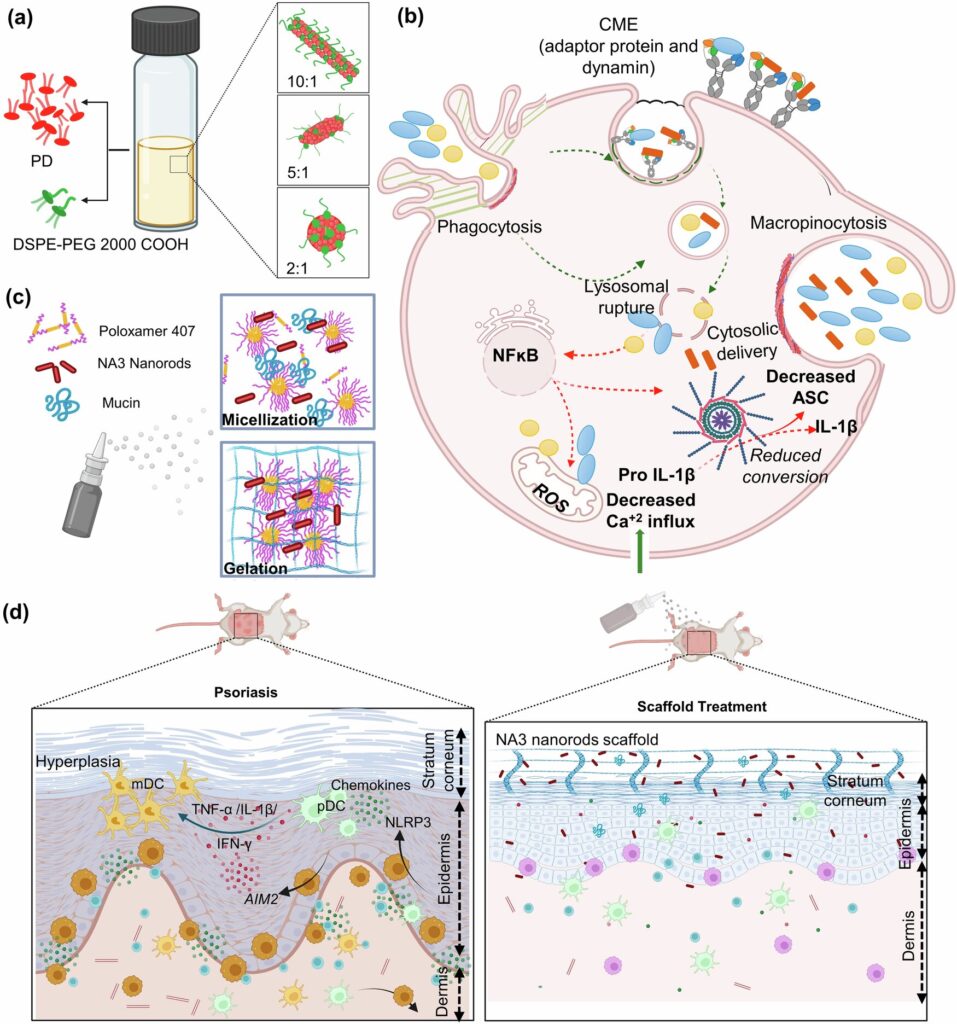Researchers at the University of Massachusetts Amherst have invented a new, sprayable delivery system for psoriasis medication that can be applied easily and locally to psoriasis lesions. Their work, published in Nature Communications, has the potential to help lower health care costs.
Psoriasis is an overreaction of the immune system that creates inflamed or scaly patches on the skin. It also carries the risk of developing psoriatic arthritis, heart disease and mental health issues. This chronic inflammatory condition affects 2–3% of the global population, or 125 million people. In the U.S. alone, that number is about 8 million, with associated annual health care costs estimated to be $135 billion.
“The problem is the treatments are very high cost,” says Ashish Kulkarni, associate professor of chemical engineering at UMass Amherst and senior author on the paper. “They can also have a lot of side effects. And even after spending so much money, up to 30 to 40% of patients fail to achieve sustained response, so it’s not like it works for everyone.”
Keeping cost and ease of application in mind, Kulkarni and his team decided to create a sprayable treatment. Their previous work found that some nanoparticles can be pro-inflammatory, which is counterproductive for psoriasis.
However, this can be counteracted by using specific lipid nanoparticles that inhibit the main inflammatory pathway. Kulkarni describes this as a trojan horse—the target immune cell does not recognize this nanoparticle container as a threat, but inside, it houses medication to disrupt the overactive immune response.
The shape of the particle also matters. Inspired by the effectiveness of non-spherical pathogens in infecting cells, the researchers designed and tested nanoparticles in different shapes: rods, ellipses and spheres.
“We found out that nanorods interact with the cells uniquely,” says Kulkarni. “They can be taken up by the cells at a much higher rate. We can deliver drugs in much higher concentrations if you use lipid nanorods instead of using spherical nanoparticles.” As a result, the nanorods inhibited 3.8 times more inflammation than nanoellipses and 4.5 times more than nanospheres.
Within the rod-shaped “trojan horse” sits the hidden warriors: a combination of two psoriasis drugs. This delivery system was 59 times more effective at inhibiting inflammatory responses than freely administering the drug without the nanoparticle system.
“Then we incorporated the lipid Nanorod into a polymer scaffold,” continues Kulkarni. “The scaffold has a unique matrix system that can keep the nanorods together in a solution, but once we spray it, the nanorods will then trickle down to the cells and then be taken up by the cells.
“We wanted to have this system as a sprayable system that can be easily applied, but once it is applied, it forms a gel where nanorods can then be released in a sustained manner inside your skin cells.”
Discover the latest in science, tech, and space with over 100,000 subscribers who rely on Phys.org for daily insights.
Sign up for our free newsletter and get updates on breakthroughs,
innovations, and research that matter—daily or weekly.
They tested this on mice with induced psoriasis-like lesions and found that those treated with the new spray effectively reduced inflammation scores. Mice that had no treatment had psoriasis severity scores of 10.25, while those that were sprayed with blank nanorods or nanorods loaded with the two psoriasis medications saw their scores decrease to 1.33 and 0.66, respectively.
Kulkarni sees the potential for his research to make an impact for people struggling with psoriasis. “This sounds like a very promising approach,” he says. “Our lab heavily works on designing therapeutics that are going to be translational. This is a unique platform. This is an easily applicable platform. This is scalable.” Next, he hopes to start toxicity and long-term efficacy studies in larger animal models.


